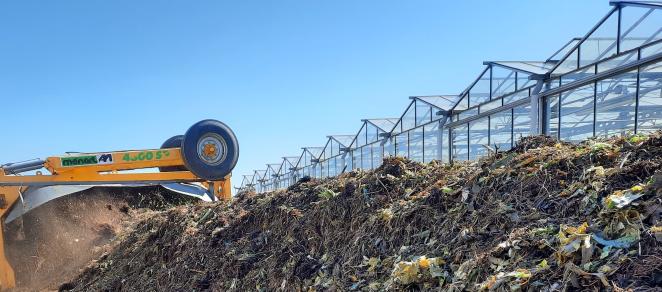Main content
Image

Small scale composting
Last year preparations have been made to include residual streams containing biodegradable materials. In the research station's greenhouse, plants were grown, using PLA-based materials. This cultivation will also be used to raise awareness about biodegradable clips, ropes, and other supporting materials. With the goal of convincing growers to adopt these alternatives. These residual streams will serve as input material for Showcase 3.
The trial demonstrates how biobased materials break down in the compost process and where improvements can be made. The greenhouse foliage will also be composted in smaller-scale farm composting. The end product of this will be used in our multi-year compost trial that has been running since 2006.
